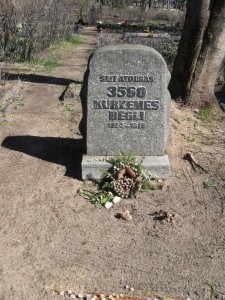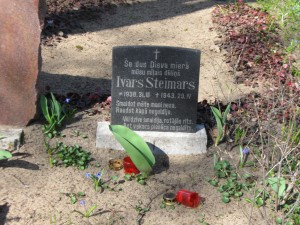Now time for another Latvian province for the Family History Through the Alphabet challenge… Livland!
Livland was not strictly a Latvian province. The territory it covered is now divided between northern Latvia and southern Estonia. This is an important thing to remember when researching ancestors from Livland – if they seem to “disappear” from Latvian records, they might just be on the other side of the modern-day border, and thus the records would be held by Estonia. The good news with that is, however, that the corresponding Estonian records are available online (click “ENG” in the top right corner if you don’t know Estonian), and thus easily consulted. The style of record-keeping will also be the same, since it was all the same province. Later records, particularly those kept by local officials, will begin to vary, however, especially since these could then be in Estonian rather than German or Russian.
While I don’t have precise numbers, just by looking at a map one can tell that Livland is much bigger than the other Baltic provinces, Kurland and Estland. It stretches from a northern boundary that corresponds roughly to a line drawn from the northern edge of the island of Saaremaa to the north coast of Lake Peipus, to a southern boundary of the Daugava river. Many important Baltic cities were located in Livland, including RÄ«ga, CÄ“sis (Wenden), Valmiera (Wolmar), Tartu (Dorpat) and Parnu (Pernau).
According to the 1897 Census, the population of Livland consisted of approximately 43% Latvians, 40% Estonians, 8% Germans, 5% Russians, with the remaining 4% consisting of Jews, Poles, Lithuanians and others. After the First World War, when Latvia and Estonia gained independence, a substantial amount of effort was spent in delineating the border between Latvia and Estonia. Generally speaking, it was accomplished by seeing whether Latvians or Estonians were the majority in the parish. There were some points of contention, however. The city of Valka was one of these, and in the end, ended up divided between the two countries. In Estonian it is known as Valga. Ainaži was also up for debate, and a local referendum determined the town’s inclusion in Latvian territory. A referendum also took place on Roņi island (Ruhnu in Estonian), an island in the bay of RÄ«ga that was predominantly inhabited by Swedes. It voted to become a part of Estonia.
Livland has a huge number of surviving records. I can’t even begin to describe them all, even though most of the research that I have done deals with what was known as Livland (both sides of the modern-day border, but predominantly on the Latvian side). If you have Livland ancestors, consider yourself lucky!
Are you interested in more historical details on Livland? Not sure if your ancestors are Latvian or Estonian? Let me know, I can help!

 (Note: this is an image to prevent spam. You will need to type it into your email program. If you’re uncertain if I’ve received your message, leave a comment here to confirm.) Some highlights:
(Note: this is an image to prevent spam. You will need to type it into your email program. If you’re uncertain if I’ve received your message, leave a comment here to confirm.) Some highlights:

